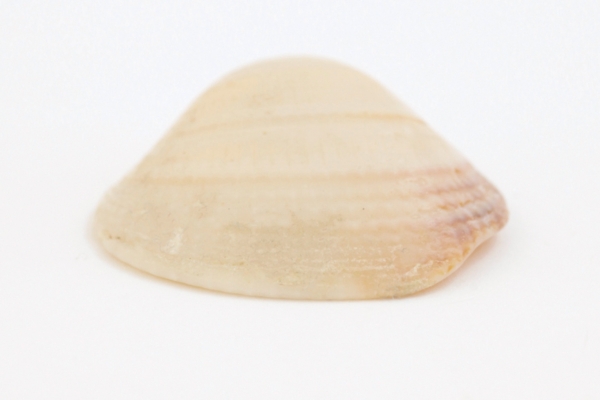
This smooth cream coloured shell is half of a hinged two-shell set which would have housed a bivalve mollusc. The shell is in fact the mollusc’s skeleton. Instead of having an internal skeleton on which their flesh hangs, many animals have an ‘exoskeleton’ which contains and supports the animal’s organs and tissues inside. Other examples include crabs, grasshoppers and cockroaches.
As with all hard structures in animals, the shell forms through a process called biomineralisation. Here the organism produces hard minerals which are then incorporated in a matrix of soft tissues. The mollusc shell is mostly calcium carbonate, with only a couple of percent of other tissues making up its mass. These shells exhibit some very interesting mechanical properties, and for this reason are studied by material scientists. For example, the fracture toughness of a mollusc shell is dramatically higher than the fracture toughness of the individual crystals that it’s made from, meaning its toughness is derived from very specific way that the composite forms.
Sample ID: 373
Particularities
- Selections
- Nature's Engineers
- Curiosities
- Relationships
- Biomineral | Biomineralisation | Cream | Exoskeleton | Marine | Smooth
Add materials you find interesting to your own selections.
Use the  button to select a material and get started.
button to select a material and get started.


